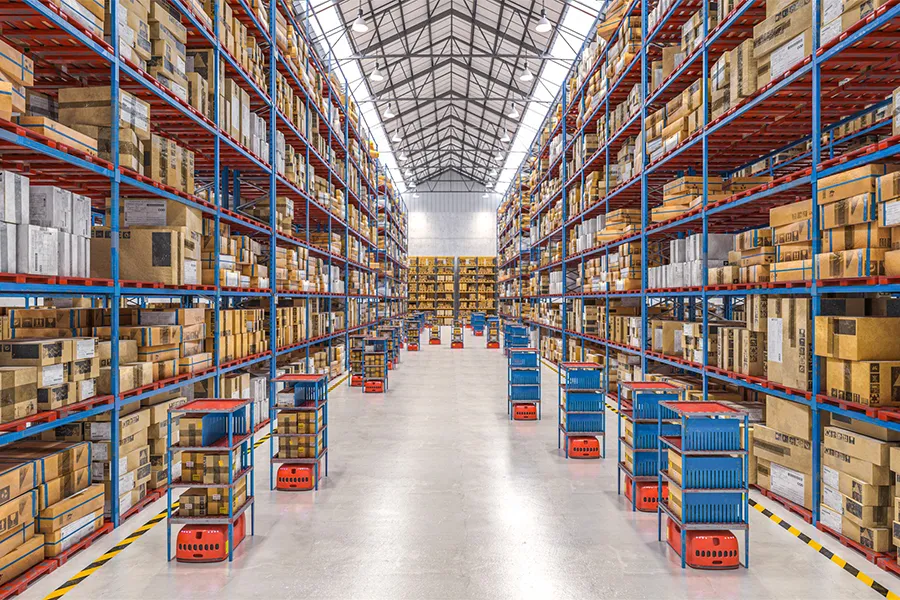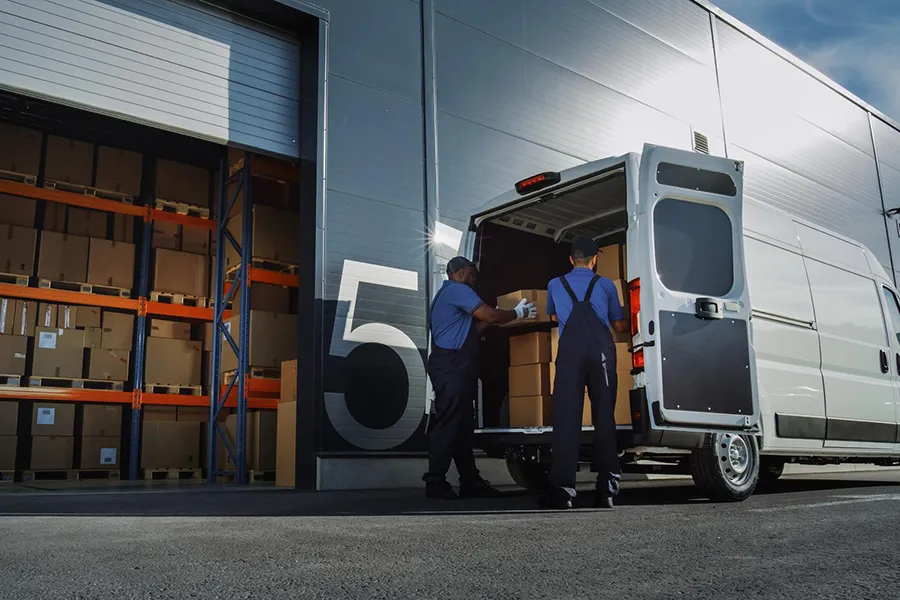What are warehousing services?
Warehousing services are one of the important parts of the international transportation and trade process and commercial activities that play an important role in the storage, management and distribution of goods. Warehousing services include storage, inventory management, packaging and preparation of goods for shipment to various destinations, which, if carried out in a systematic and quality manner, can reduce costs and increase productivity.
Saina Express Company, which operates as a representative of Saman Express, has high expertise and experience in the field of warehousing of various goods, as well as standard warehouses equipped with advanced technologies, and gives you the assurance that the goods will be stored in standard and optimal conditions.
Types of warehousing services
Warehousing services include various categories that depend on the specific needs of each business and the type of each shipment. Below, we have mentioned the types of warehousing services.
General warehousing
This type of warehousing is suitable for general goods that do not require special storage conditions. In this type of warehousing, goods are temporarily stored until they are ready for shipment or distribution. General warehouses are typically used for non-sensitive products and goods that do not require special conditions, such as consumer goods, clothing, and household appliances. This type of warehousing is cost-effective for many businesses due to its lower cost and simpler process.
Special storage (with special conditions)
Some goods require special storage conditions. This type of storage is dedicated to goods that require temperature, humidity, light or special storage conditions. For example, perishable foods such as meat, fruits, vegetables or dangerous goods such as explosives, chemicals, etc. require temperature control and other environmental factors and require storage in refrigerated warehouses. Also, pharmaceutical and chemical goods that must be stored in a specific temperature environment, or sensitive electronic equipment that may be damaged by moisture, require special storage. In addition to special equipment for temperature and humidity control, special warehouses are equipped with advanced security and monitoring systems to ensure the safety and health of the goods.

Warehousing based on advanced technologies
Smart warehousing involves the use of inventory management systems and special software to track goods, update inventory status, optimize warehouse space, etc. Modern technologies such as barcodes, RFID, and even artificial intelligence systems allow companies to manage the warehousing process with high accuracy and automatically. These services are especially useful for businesses with large volumes of goods and inventory, and reduce errors, increase productivity, and speed up various processes.

Warehousing for Export and Import
Export and import warehousing is dedicated to storing goods that are being prepared for transportation to other countries. This type of warehousing involves various steps including packaging, loading, and clearance of goods. Export warehouses are usually located near ports, airports, or trade borders to facilitate the international transportation process.

What are the steps in the warehousing process?
The warehousing process involves a set of steps and activities that are carried out in order to control, store, identify and distribute goods in the warehouse. The first step in the warehousing process is to receive goods from suppliers. These goods may include raw materials, semi-finished products or ready-to-sell products. After receipt, the goods must be checked for quality and quantity to ensure that they match the orders. At this stage, the goods receipt or goods receipt is recorded to update the warehouse inventory.
After receiving the goods, the next step is warehousing or storage. The goods must be stored in appropriate places in the warehouse in an orderly and systematic manner. This step typically involves classifying the goods based on various characteristics such as type, size, weight and expiration date. The use of warehouse management systems (WMS) helps warehouse managers to carry out the process of storing and moving goods more accurately and quickly.
In the warehousing process, monitoring the inventory of goods is also of particular importance. Inventory should be continuously monitored and updated through periodic inspections, the use of barcodes and RFID, or automated systems.
The warehousing process also includes packaging, preparing, and shipping goods accurately and without damage to ensure customer satisfaction.
Warehousing Fee
Warehousing fee refers to the cost that a company or individual pays to store and manage goods in warehouses. These costs may include a set of payments such as costs related to warehouse space, manpower, inventory management equipment and systems, insurance of goods, electricity and other operating costs that are necessary to store and care for goods in the warehouse.
In other words, warehousing fee is a fee paid to the warehouse owner for the use of warehouse space and related services. This fee can be calculated on a monthly or annual basis, which varies depending on the volume of goods, the duration of storage and the type of services provided.
In some cases, these costs are included in business processes and sales and purchase contracts and are separately mentioned in invoices. For example, if a company wants to store goods in another warehouse for a long time, it may have to pay warehousing fees.
Proper warehousing method
Proper warehousing includes the correct arrangement of goods, inventory control, and optimal management of resources in the warehouse, which has a direct impact on the efficiency of business operations, cost reduction, and customer satisfaction. Proper warehousing also helps maintain and control the quality of goods, closely track inventory, observe warehouse safety, etc., and will lead to higher management and productivity of your business. In the following, we will discuss the correct warehousing method and its practical methods so that you can optimize your warehouse performance by observing the correct warehousing principles.
Designing warehouse space and arranging goods
The first step in proper warehousing is designing a suitable space for the warehouse. The warehouse space should be designed in such a way that access to goods is quick and easy. For this, it is necessary that the goods that are used most often are available and the goods that are moved regularly are near the entrance and exit of the warehouse. On the other hand, goods that are used less often can be placed in more distant parts of the warehouse. It will also help you to better manage your warehouse space and prevent clutter by using shelves, pallets, and other storage equipment.
Defining different warehouse sections
Dividing the warehouse space into different sections such as: raw materials, semi-finished products, ready-to-sell goods, etc., can simplify the organization of the warehouse and prevent confusion in finding the desired goods.
Inventory and warehouse management systems
One of the important principles of warehousing is to accurately track inventory and control it properly. Warehouse management systems can help you manually or automatically check the amount of goods in the warehouse accurately and up-to-date. For example, warehouse management software systems such as ERP (Enterprise Resource Planning), the use of barcodes or QR, etc. can help you in proper warehousing.
Quality control and storage of goods
Controlling the quality of goods and storing them properly in the warehouse is of great importance to prevent spoilage or damage to the goods. For this purpose, you must take the necessary measures for proper ventilation of the warehouse, temperature control, periodic inspections to ensure the health of the goods, etc.
Warehouse Safety and Health
Adhering to the principles of safety and health in the warehouse is one of the main priorities of warehousing, which is effective in preventing various dangers such as falling objects, fire, injury to employees, etc. Using safety equipment such as helmets, gloves, safety shoes, protective glasses, installing safety signs and signs in different parts of the warehouse, etc. are appropriate measures to maintain warehouse safety. In addition, you must take the necessary measures and plans for emergencies such as fire, earthquake, etc. and provide the necessary training to your employees.
